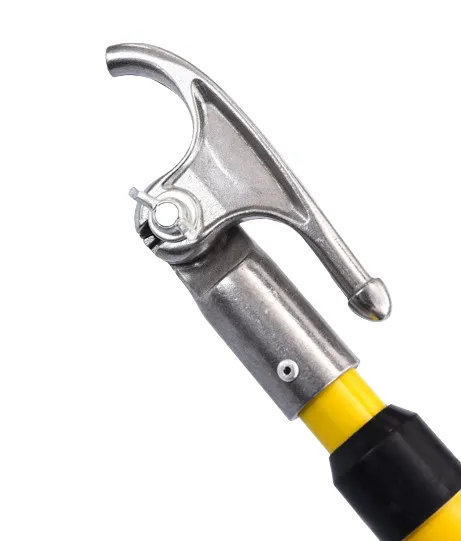
-
 Afrikaans
Afrikaans -
 Albanian
Albanian -
 Amharic
Amharic -
 Arabic
Arabic -
 Armenian
Armenian -
 Azerbaijani
Azerbaijani -
 Basque
Basque -
 Belarusian
Belarusian -
 Bengali
Bengali -
 Bosnian
Bosnian -
 Bulgarian
Bulgarian -
 Catalan
Catalan -
 Cebuano
Cebuano -
 Corsican
Corsican -
 Croatian
Croatian -
 Czech
Czech -
 Danish
Danish -
 Dutch
Dutch -
 English
English -
 Esperanto
Esperanto -
 Estonian
Estonian -
 Finnish
Finnish -
 French
French -
 Frisian
Frisian -
 Galician
Galician -
 Georgian
Georgian -
 German
German -
 Greek
Greek -
 Gujarati
Gujarati -
 Haitian Creole
Haitian Creole -
 hausa
hausa -
 hawaiian
hawaiian -
 Hebrew
Hebrew -
 Hindi
Hindi -
 Miao
Miao -
 Hungarian
Hungarian -
 Icelandic
Icelandic -
 igbo
igbo -
 Indonesian
Indonesian -
 irish
irish -
 Italian
Italian -
 Japanese
Japanese -
 Javanese
Javanese -
 Kannada
Kannada -
 kazakh
kazakh -
 Khmer
Khmer -
 Rwandese
Rwandese -
 Korean
Korean -
 Kurdish
Kurdish -
 Kyrgyz
Kyrgyz -
 Lao
Lao -
 Latin
Latin -
 Latvian
Latvian -
 Lithuanian
Lithuanian -
 Luxembourgish
Luxembourgish -
 Macedonian
Macedonian -
 Malgashi
Malgashi -
 Malay
Malay -
 Malayalam
Malayalam -
 Maltese
Maltese -
 Maori
Maori -
 Marathi
Marathi -
 Mongolian
Mongolian -
 Myanmar
Myanmar -
 Nepali
Nepali -
 Norwegian
Norwegian -
 Norwegian
Norwegian -
 Occitan
Occitan -
 Pashto
Pashto -
 Persian
Persian -
 Polish
Polish -
 Portuguese
Portuguese -
 Punjabi
Punjabi -
 Romanian
Romanian -
 Russian
Russian -
 Samoan
Samoan -
 Scottish Gaelic
Scottish Gaelic -
 Serbian
Serbian -
 Sesotho
Sesotho -
 Shona
Shona -
 Sindhi
Sindhi -
 Sinhala
Sinhala -
 Slovak
Slovak -
 Slovenian
Slovenian -
 Somali
Somali -
 Spanish
Spanish -
 Sundanese
Sundanese -
 Swahili
Swahili -
 Swedish
Swedish -
 Tagalog
Tagalog -
 Tajik
Tajik -
 Tamil
Tamil -
 Tatar
Tatar -
 Telugu
Telugu -
 Thai
Thai -
 Turkish
Turkish -
 Turkmen
Turkmen -
 Ukrainian
Ukrainian -
 Urdu
Urdu -
 Uighur
Uighur -
 Uzbek
Uzbek -
 Vietnamese
Vietnamese -
 Welsh
Welsh -
 Bantu
Bantu -
 Yiddish
Yiddish -
 Yoruba
Yoruba -
 Zulu
Zulu


نويابىر . 16, 2024 18:12 Back to list
buy fish tape
Understanding and Using Fish Tape A Handy Guide for Electrical Wiring
When it comes to electrical wiring, one vital tool that every electrician and DIY enthusiast should have in their arsenal is fish tape. Often overlooked, this simple yet effective tool is indispensable for running wires through walls, ceilings, and conduits. If you’ve never used fish tape before, or if you’re considering buying one, this article will provide you with valuable insights and practical tips on how to utilize it efficiently.
What is Fish Tape?
Fish tape, also known as draw tape or wire pulling tape, is a flat, flexible tool that often comes in a coil or spool. Made from materials like fiberglass or steel, its primary purpose is to facilitate the pulling of electrical wires through various pathways. The flexibility of fish tape allows it to navigate through tight spaces and bends, making it an ideal choice for localized wiring installations.
Why Buy Fish Tape?
1. Efficiency Fish tape simplifies the wiring process, allowing you to run wires quickly and effectively. Instead of struggling with cumbersome methods, using fish tape can save you time and reduce frustration.
2. Versatility Fish tape can be utilized for a variety of wire types and sizes, making it a versatile addition to your tool kit. Whether you’re dealing with residential rewiring or commercial electrical installations, fish tape adapts to different needs.
3. Cost-Effective Compared to other wiring tools, fish tape is relatively inexpensive. Its durability and utility can provide considerable value, especially if you frequently engage in wiring tasks.
4. Safety Using fish tape helps to keep wires organized and free from damage during installation. By reducing the chances of kinks or breaks in the wire, fish tape contributes to a safer wiring project.
How to Use Fish Tape Effectively
buy fish tape

Using fish tape may seem straightforward, but mastering the technique can yield better results. Here’s a simple step-by-step guide on how to use this essential tool
1. Preparation Before using fish tape, prepare the area where the wires will be installed. Ensure there’s a clear pathway from the starting point to the end point, whether it’s through walls or conduit.
2. Insert the Fish Tape Gently push the end of the fish tape into the conduit or wall opening. If you’re working in a wall, it might be necessary to drill an entry hole first.
3. Navigate the Path As you push the fish tape forward, it will flex and bend to navigate through twists and turns. Make small adjustments and patiently work the tape until you reach the destination point.
4. Attach the Wires Once the fish tape has emerged at the other end, attach the electrical wires securely to the tape. A good practice is to use electrical tape for this connection, ensuring the wires are well-affixed and won’t come loose during the pulling process.
5. Pull the Tape Back With the wires connected, pull the fish tape back through the conduit or wall opening. This will draw the wires into the desired location.
6. Finish Up Once the wires are successfully pulled through, disconnect them from the fish tape, and make sure to seal any openings or conduits appropriately.
Conclusion
Purchasing fish tape is a wise investment for anyone involved in electrical work, whether professional or amateur. Understanding how to use this tool effectively can streamline your projects and enhance your efficiency. So, the next time you find yourself in need of running wires, reach for the fish tape, and make your wiring tasks simpler and more organized!
Latest news
The Unique Design of Cable Socks
NewsJun.04,2025
Swivel Connectors in Industrial Automation
NewsJun.04,2025
Safety Features of Link Sticks
NewsJun.04,2025
How to choose the best cable pulling winch for sale
NewsJun.04,2025
Fish tape safety precautions
NewsJun.04,2025
Essential Maintenance Tips for Cable Pulling Tools
NewsJun.04,2025











